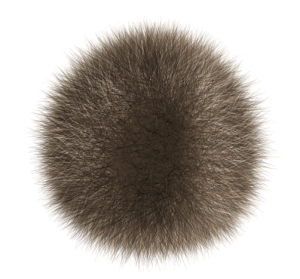A Whale of a Time 3 - baleen hunting in the collections
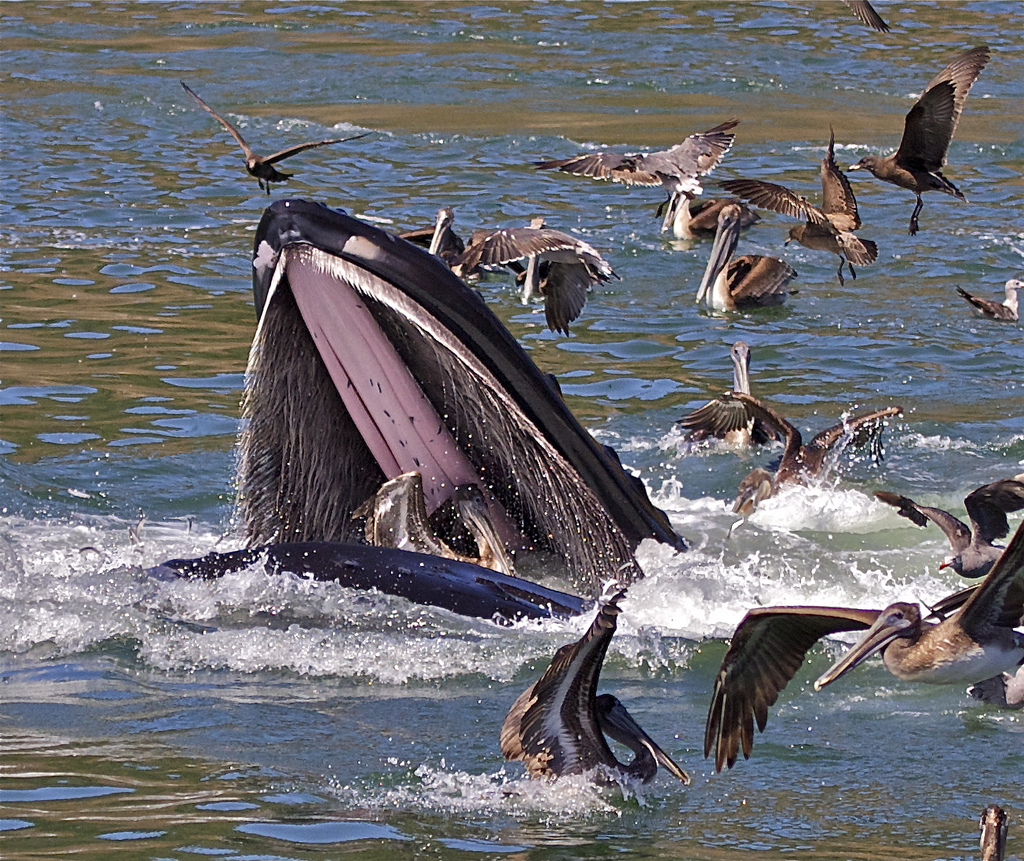 In February 2016 we had our first day working in the collections on our British Ecological Society project “A Whale of A Time” (see our proposal). The plan for the day was for myself and my collaborators Andrew and Clive (plus Masters students Kate and Dan) to take a look at what was in the collection then make a strategic plan for what we would sample in our project. We estimated that we had enough money to take about 300 samples, and the original plan was to take these from the jaw bones of rorqual whales (Balaenopteridae - this includes humpback, minke, fin, sei and blue whales) of different species, from different geographic locations and from different dates. This didn’t entirely go to plan.
In February 2016 we had our first day working in the collections on our British Ecological Society project “A Whale of A Time” (see our proposal). The plan for the day was for myself and my collaborators Andrew and Clive (plus Masters students Kate and Dan) to take a look at what was in the collection then make a strategic plan for what we would sample in our project. We estimated that we had enough money to take about 300 samples, and the original plan was to take these from the jaw bones of rorqual whales (Balaenopteridae - this includes humpback, minke, fin, sei and blue whales) of different species, from different geographic locations and from different dates. This didn’t entirely go to plan.
The day began with the usual transport nightmares. Clive and Kate’s train got canceled, the Piccadilly line was delayed, and I was loaded with so much equipment I was like a slowly lumbering pack horse. Eventually (after Andrew took an age to decide on a sandwich!) we all got together and managed to head to the collections.
I’ve been working with museum collections for over 10 years now but I still get a buzz of excitement every time I go into the collections. For the others this was their first trip to the cetacean collections so you can probably imagine their levels of excitement! After a while being shown round the collections by Richard we decided to let everyone have a look round on their own because it was “too overwhelming” to focus on strategic planning when surrounded by hundreds of whale skeletons. Once everyone had calmed down a bit we realised we had a problem, we didn’t have enough specimens to do the analyses we had planned. Our original plan had been to sample around 300 rorqual skulls, instead the collection contained only around 30. Oops!
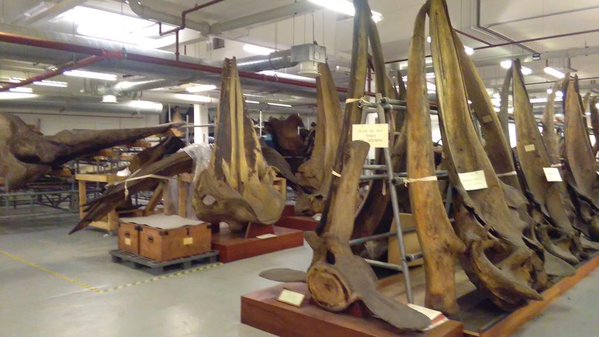
It turns out we had misread the Museum catalogue and interpreted all material as skull material, rather than the fragments of skeleton etc. D’oh! This is what happens when you’re rushing to finish a grant application! But in general, gaps in species representation or geographic representation are really common in museum collections. This can reflect various factors - sometimes species are rare so they are absent from collections, other times the museum may just not have done much collecting in the region where the species is found. Even within common species it is unusual to get a really good representation across the species’ geographic range. This doesn’t lessen the value of museum collections, but it is something to be aware of before starting a project using them, especially if it requires measures of intraspecific variation. Often you can improve this by visiting multiple museums, though in the case of large rorqual whale skulls, 30 appears to be the most that any museum we could reasonably visit has in its catalogue, so it wouldn’t help much.
For rorquals, the issue is probably related to their size and the difficulty of acquiring, preparing and then storing such large specimens. Acquisitions usually require a “lucky” beaching event somewhere that was close enough to a museum for the specimen to be collected and cleaned. Often our specimens were purchased from other collectors or museums. Other issues are that most of these species are protected under CITES, making their movement more difficult. And of course all of this costs money, something that is in short supply across museums.
We are scientists however, and refused to buckle at the first hurdle. After lunch, several coffees, and a bit of drawing on the whiteboard we got back on track. Instead of sampling bone, we would sample baleen. Baleen is what rorqual whales use to feed - they take in water with their prey floating in it, then shut their mouths and use their muscular tongues to push the water out through their baleen. The baleen acts like a massive sieve retaining the prey items in the mouth. Baleen is made up of a series of plates (made of keratin like our finger nails) that grow through a whale’s lifetime. So looking at stable isotope samples taken at intervals along each baleen plate gives us the chance to look at changes in stable isotope ratios through time (of course we have to make a lot of assumptions here about the rate of growth etc.). This should give insights into changes in the diet of the whale and perhaps its latitudinal range.
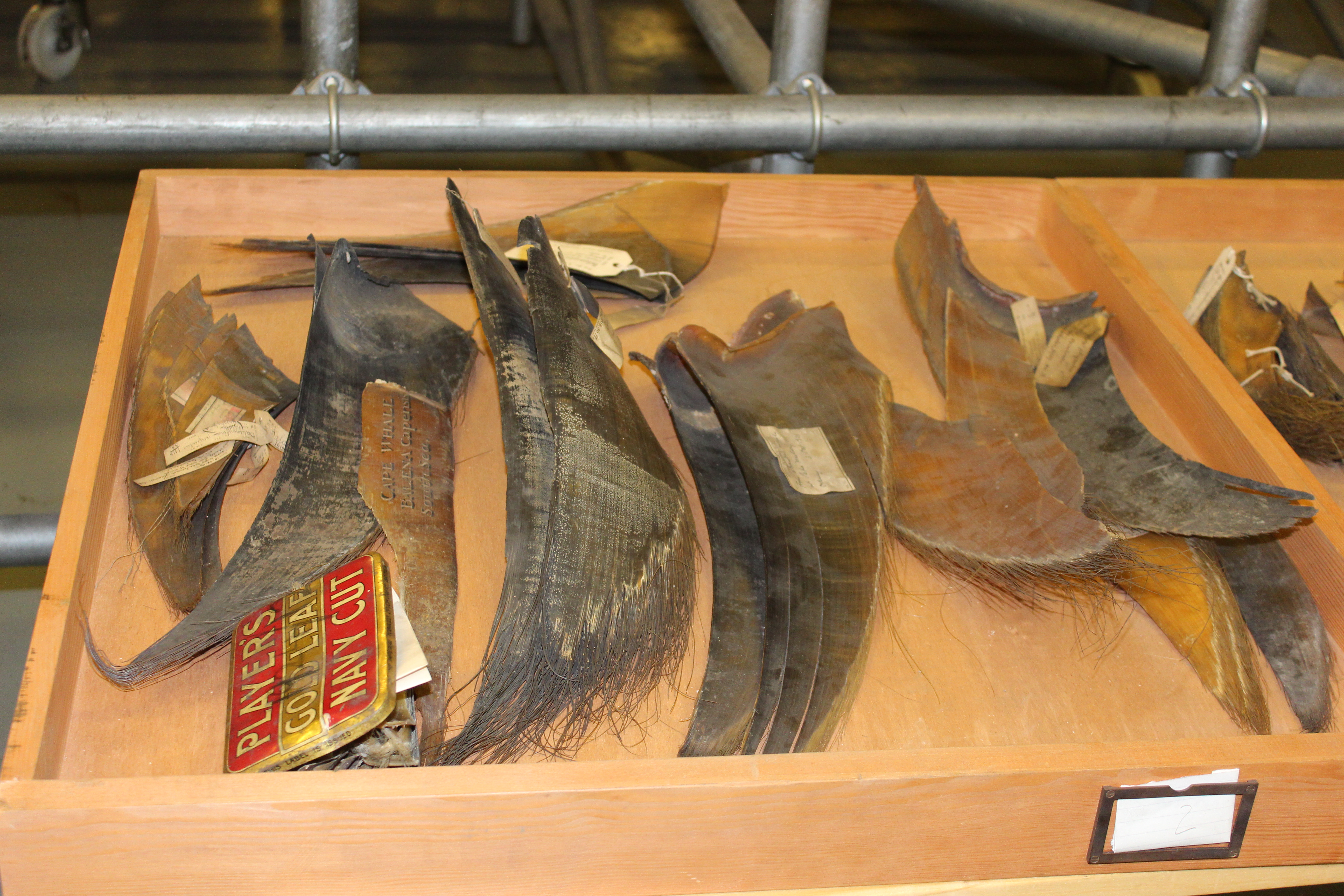
With this first problem solved, we then combed the collection for baleen samples. Most of these were in some drawers, but we also found a huge crate containing all the baleen from the blue whale that will eventually be displayed in the Hintze Hall in the Museum. There were also a few whale skulls with baleen plates still attached (see a later post for more on those). We put together a set of specimens to sample and whittled these down to those with the best metadata (i.e. details of collection date, location) and giving an even representation across years (our oldest specimen was stranded in the late 1800s, our youngest specimen was stranded in the 1980s).
Stage one complete, the next step is to get the baleen to Southampton so Clive and Kate can take samples and extract stable isotopes. Watch this space for updates!
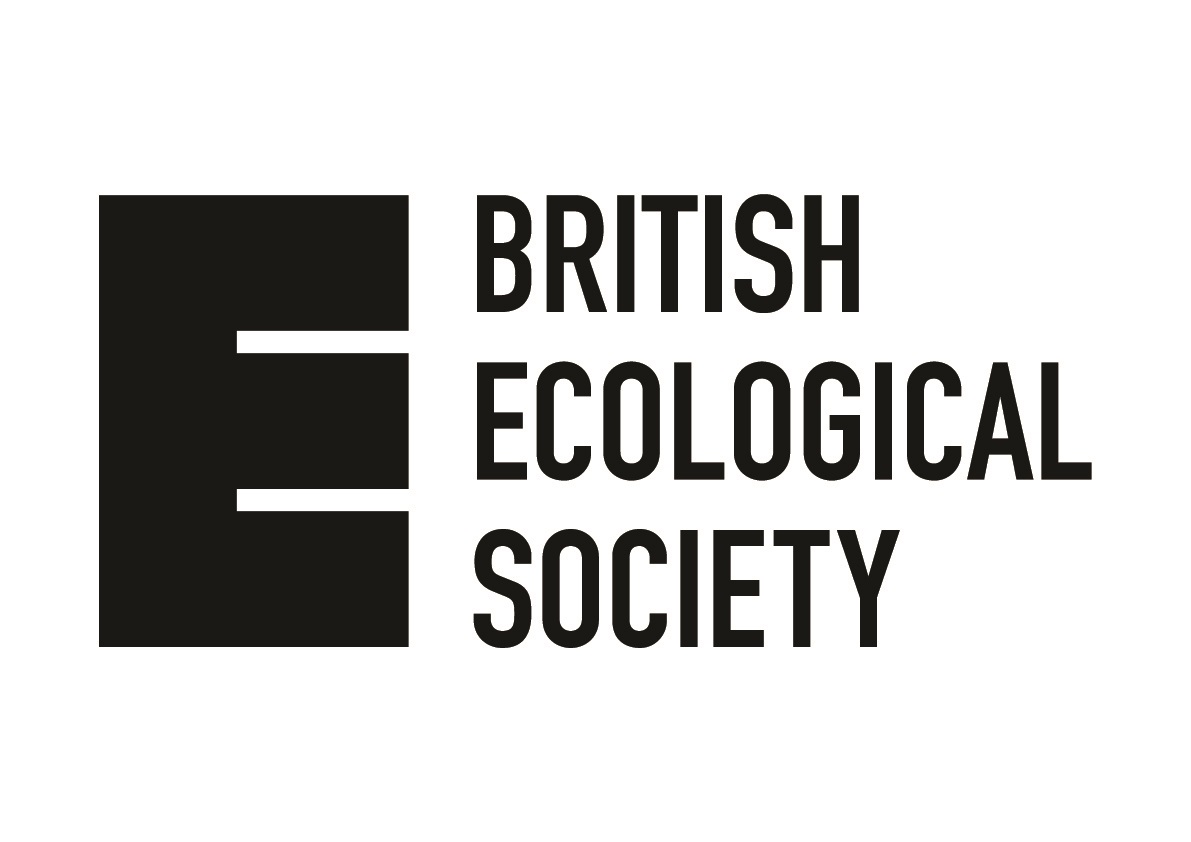
Natalie
@nhcooper123
Picture credit: Teddy Llovet (Flikr)
Humpback whale feeding showing its baleen plates and an unlucky pelican.
